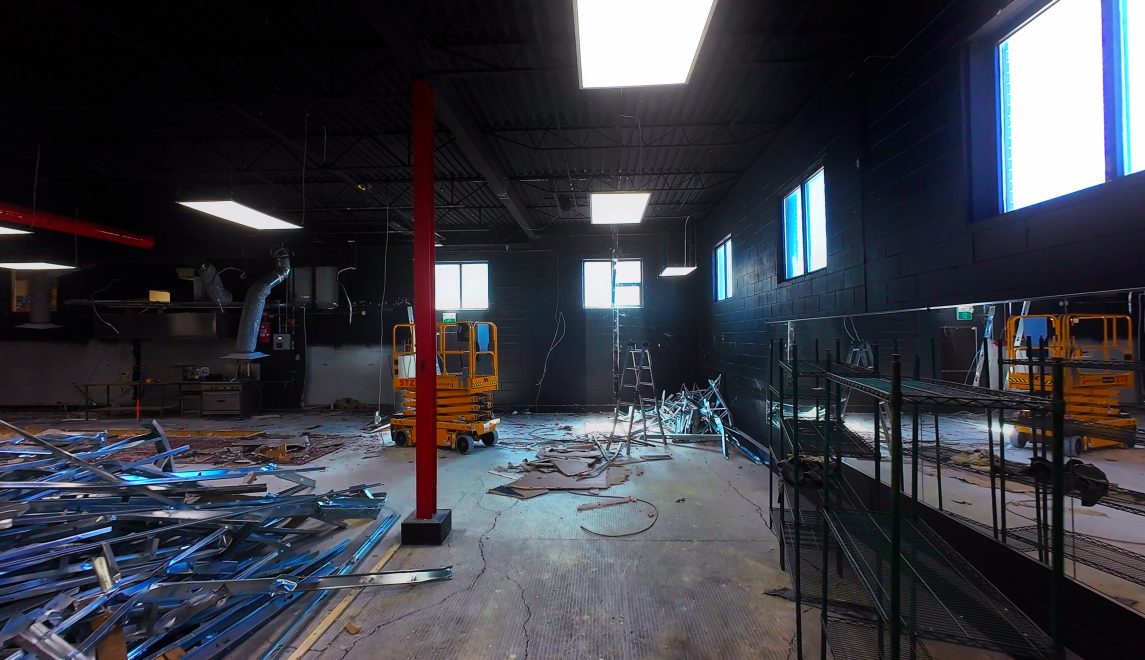How to Start a Gym: What No One Tells You (But You Absolutely Need to Know) – Part 1

Opening a gym is trendy. Everyone has a coach in their DMs, a “private” studio project in their basement, or a dream of creating “a different kind of space.”
But let’s be clear: 90% of independent gyms shut down within the first 3 years. Why? Because passion
doesn’t replace strategy, and dumbbells don’t pay the rent.
Here’s a guide to everything you need to know to start your gym.
1. Stop dreaming. Start calculating.
Maybe you’ve got a killer vision: Industrial lighting, neon green turf, wall-mounted rigs, custom dumbbells, embroidered shirts. Awesome. But now put a price tag on it.
What does it actually cost to open a gym?
The average cost to open a modest, well-equipped training facility in North America is between
$25,000 and $200,000.
This includes:
- Lease deposits & rent (first/last month)
- Renovations & flooring
- Equipment (racks, plates, specialty gear)
- Insurance, permits, etc
- CRM & booking software
- Security systems, lockers, and signage
- Branding & marketing budget
- Initial staff costs, launch events, printing
Think you’ll pull it off with $10K and a few used dumbbells from Kijiji? You won’t.
Even if you find deals and DIY part of it, you still need working capital because clients won’t flood in on day one. You’ll have overhead before you have income.
Here’s what smart operators do:
- Build a spreadsheet. Itemize everything. Then double it.
- Plan for 6 months of operations with minimal revenue.
- Cut vanity upgrades and reinvest in sales, staff, and systems.
This isn’t about crushing your dream, it’s about funding it properly because the gym you can afford and run well beats the one that looks cool but bleeds you dry.
So, do the math. Then do it again.
And if it still holds up, you’re already ahead of 90% of new gym owners.
2. You’re not a trainer. You’re an entrepreneur.
Being a great coach doesn’t automatically make you a great gym owner.
Owning a gym means you’re not just a technician anymore. You’re a business operator. That comes with a whole new set of responsibilities.
To succeed long-term, you need to be good at what happens off the floor, too.
What running a gym means:
- Reading financial statements
→ Profit & loss, cash flow, monthly burn rate, or you’re flying blind. - Negotiating commercial leases
→ Understand hidden costs, escalation clauses, and zoning. One bad deal can sink you before you open. - Managing employees (and their moods)
→ Not just schedules; their personalities, egos, growth paths, and conflicts. - Understanding digital marketing
→ Ads, lead magnets, conversion funnels, email sequences, SEO, retargeting, or you’ll pay someone overpriced to guess for you. - Solving logistical chaos
→ Broken equipment, missed cleanings, client complaints, software bugs, last-minute no-shows… every week, something goes wrong. Own it, fix it.
The mindset shift:
If this turns you off, stay an employee. Or rent space. There’s no shame in that. Some of the best coaches in the world don’t run their gyms.
But if you choose ownership, step into the role fully. Get trained. Surround yourself with people who know finance, operations, and marketing.
Build that machine, and you’ll finally have the freedom you dreamed of.
3. Find a strategic location, not a sexy one.
Don’t fall for the trap of opening in a trendy loft with big windows and exposed brick… if your clients can’t find parking, don’t walk by it, or can’t afford what you sell. Your location isn’t just about aesthetics; it’s about accessibility, functionality, and profit.
Ask yourself the real questions:
- Do my ideal clients live or work within 10 minutes?
→ People don’t commute to a gym, they go to what’s convenient and familiar.
→ Think residential hubs, office clusters, or school zones, not the edge of the industrial park (unless you’re strength-sport-specific and niche). - Is there free or easy parking?
→ Especially for early morning or evening classes, lack of parking = fewer clients.
→ Bonus: bike racks and walkability = community points. - Is there consistent foot or car traffic visibility?
→ A plain sign on a busy street is often more effective than a beautiful space in a hidden alley.
→ Visibility = free daily impressions. - Does the zoning allow a fitness facility?
→ Don’t sign anything before checking municipal codes. Some commercial leases restrict training, music volume, or group activities.
Red flags to avoid:
- Paying premium rent just because the space looks cool
- Choosing a location far from your actual market or niche (ex, high-performance athletes vs. general pop)
- Ignoring accessibility for clients with injuries, strollers, or low mobility.
Bonus strategic tip:
Before signing, simulate the client experience:
Try arriving at 6:00 AM, parking, entering the space, and imagining a first-timer walking in.
Ask yourself:
- Is it welcoming?
- Is it easy to find?
- Does it match the price point I’ll charge?
Conclusion: You’re Just Getting Started
If you’re still reading, congratulations, you’re already ahead of most. You’re not just dreaming about opening a gym, you’re planning for it, seriously. That mindset alone puts you in a different league.
What you’ve just read is the hard truth: opening a gym isn’t about aesthetics or passion alone. It’s about strategy, numbers, leadership, and execution. The kind of gym that survives, and thrives, is the one that’s built on clarity, not chaos.
But this is only the beginning.
In Part 2, we’ll dive into the real engine behind a successful gym: How to sell every day, structure your offers, and build a business model that doesn’t just survive, it scales.
Let’s keep building.
Stay strong and keep leaning.
- Simon D. Ducharme, Strength coach – Founder of Institut FPP
